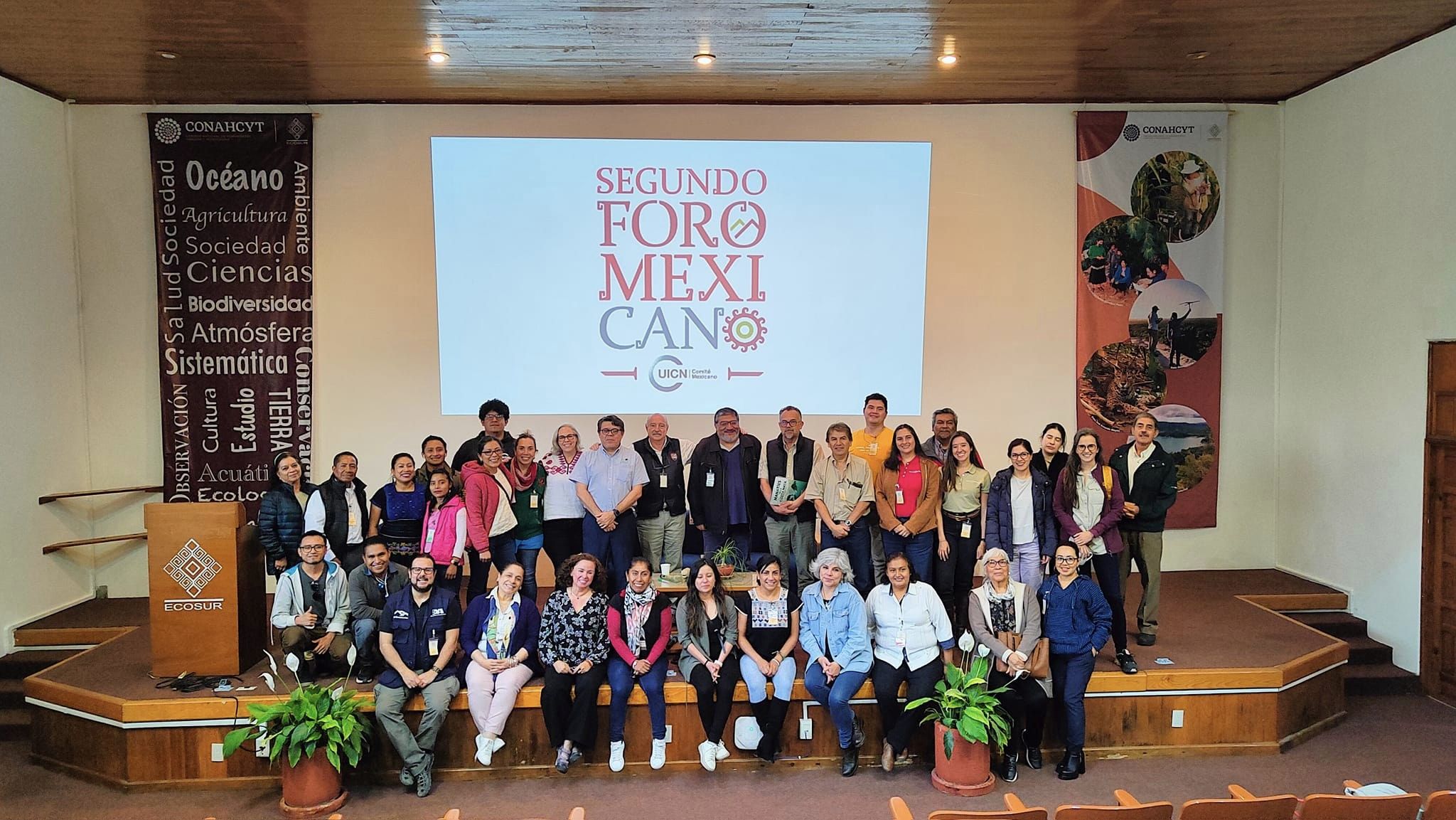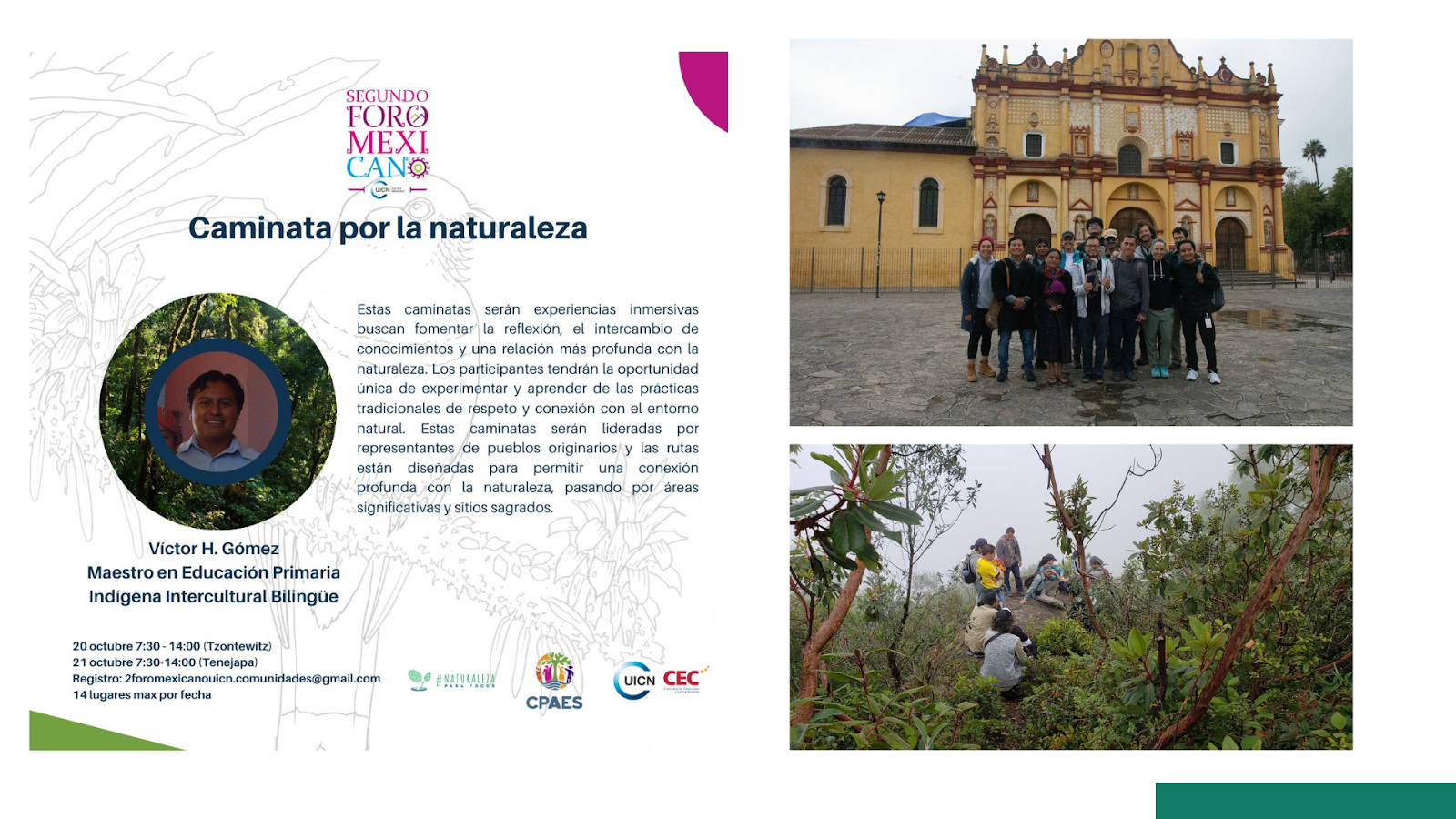Roots of territorial sustainability of the Peoples of Mexico: Indigenous Peoples, Gender and Youth.
The IUCN Mexican Forum "Roots of territorial sustainability of the peoples of Mexico" has been an invaluable space for exchange, since it allowed bringing together Indigenous leaders, experts, professionals, and people committed to the advancement of sustainable practices in the Mexican territory.

Mexican National Forum of the International Union for Conservation of Nature (IUCN)
San Cristóbal de las Casas, Chiapas - Mexico
Throughout four days, attendees from different parts of the country and the world immersed themselves in deep dialogues and collective reflections, outlining strategies and innovative solutions to the main challenges facing our society in cultural, social, political, economic and environmental issues, emphasizing the sense of belonging and identity that we as human beings have had throughout our history towards territory and how we are willing to defend, care for and protect it by valuing what Mother Earth has given us.
Forum website | Forum Facebook page
Activity report:
Puppet workshop - Guardians of life
Puppetry is an important part of artistic expression, especially in today's times when we are invaded by technology. The puppet takes us to a world not only of fantasy but also of reflection, because whatever the story they tell, it always leaves a teaching, a message of peace, love, and solidarity. This workshop spoke about humans as Guardians of Life, representing the important role we play in caring for the world around us.
Dialogic presentation
Communication as a tool for connecting with nature
Presentations explored the role of women, youth, and Indigenous peoples in the design and implementation of communication strategies aimed at promoting actions for the conservation of nature. Among the participants' contributions, the importance of cultivating a deep and holistic understanding of the needs, capacities, and potential of these groups was highlighted.
A summary of the ideas presented included:
- a) The co-construction of communication strategies that respond to the individual and collective needs and preferences of women, youth, and Indigenous Peoples;
- b) The adoption of an inclusive approach to encourage, through communication tactics, the active participation of these groups in nature conservation;
- c) The implementation of training processes and the establishment of safe environments that promote the joint participation of these groups.
The need to take advantage of communication as an effective tool to make visible the fundamental role played by women, Indigenous Peoples, and youth in the field of conservation was recognized. The urgency of implementing training programs in communication and social marketing designed specifically for these groups was also stressed.
With regard to youth participation, the generation of projects and the organization of artistic encounters related to nature conservation, in which young people would be directly responsible, were proposed. Emphasis was placed on the importance of using media and spaces that would be relevant to them, in order to allow them to express their voices and experiences effectively.
In addition, participants provided valuable perspectives on how communication could contribute to strengthening the work of the International Union for Conservation of Nature (IUCN). Among the most relevant agreements was the need to promote collaborations between experts from the Commission on Education and Communication and IUCN members to develop effective communication tools that could be adapted to diverse contexts.
Nature Immersions
These immersive experiences were designed to foster reflection, knowledge sharing, and a deeper relationship with nature.
The 27 participants had the unique opportunity to experience and learn from traditional practices of respect and connection with the natural environment. These hikes were led by representatives of Indigenous communities and the routes are designed to allow a deep connection with nature, passing through significant areas and sacred sites. During the walks, there were moments of reflection, meditation, and exchanges of knowledge, perspectives, and experiences.
Nature walks program (Date 21 and 22)
Dialogic presentation
Reimagining the conservation of territories
This presentation addressed the need to reimagine conservation approaches from a territorial and participatory perspective. It is necessary to rethink financing and traditional intermediaries, seeking alternatives that directly empower Indigenous Peoples, communities, women, and youth. In defining priorities from the grassroots, we recognize the importance of respecting and valuing the knowledge rooted in the territory, allowing conservation decisions to be informed by those who best understand its unique needs and challenges. In this dialogue circle, we heard from participants about how conservation must recognize its intrinsically local and territorial nature.
Workshop
Gender and biodiversity
The realities of human beings in Chiapas and the relationship with the factors that surround them, whether gender, geographic area, or ethnicity, make the social construction that determines the experiences and violence that people experience.
In this workshop, the participants, all of them young people, shared and learned important topics in the context of the region and how they can apply this knowledge in their work areas.
Video of the workshop
Commission sessions
On October 21 was the lessons learned session of the commissions, for this meeting the following were presented:
- The Education and Communication Commission.
- The Commission on Environmental, Economic and Social Policy.
- The World Commission on Protected Areas.
- The Species Survival Commission.
Volunteers:
- Hector Moguel
- Félix Coutiño
- Eduardo Chankin
- Diana zendejo
- Aurora Gómez Espinoza
ANNEX
Figure 1: Use of logos of the organizations involved in the event.
Figure 2: Opening of the IUCN Mexican Forum
Figure 3: Space for reflection, cultural market, and stand.
Figure 4: Group photo of the people who participated in the assembly.
Disclaimer
Opinions expressed in posts featured on any Crossroads or other blogs and in related comments are those of the authors and do not necessarily reflect the opinions of IUCN or a consensus of its Member organisations.
IUCN moderates comments and reserves the right to remove posts that are deemed inappropriate, commercial in nature or unrelated to blog posts.
